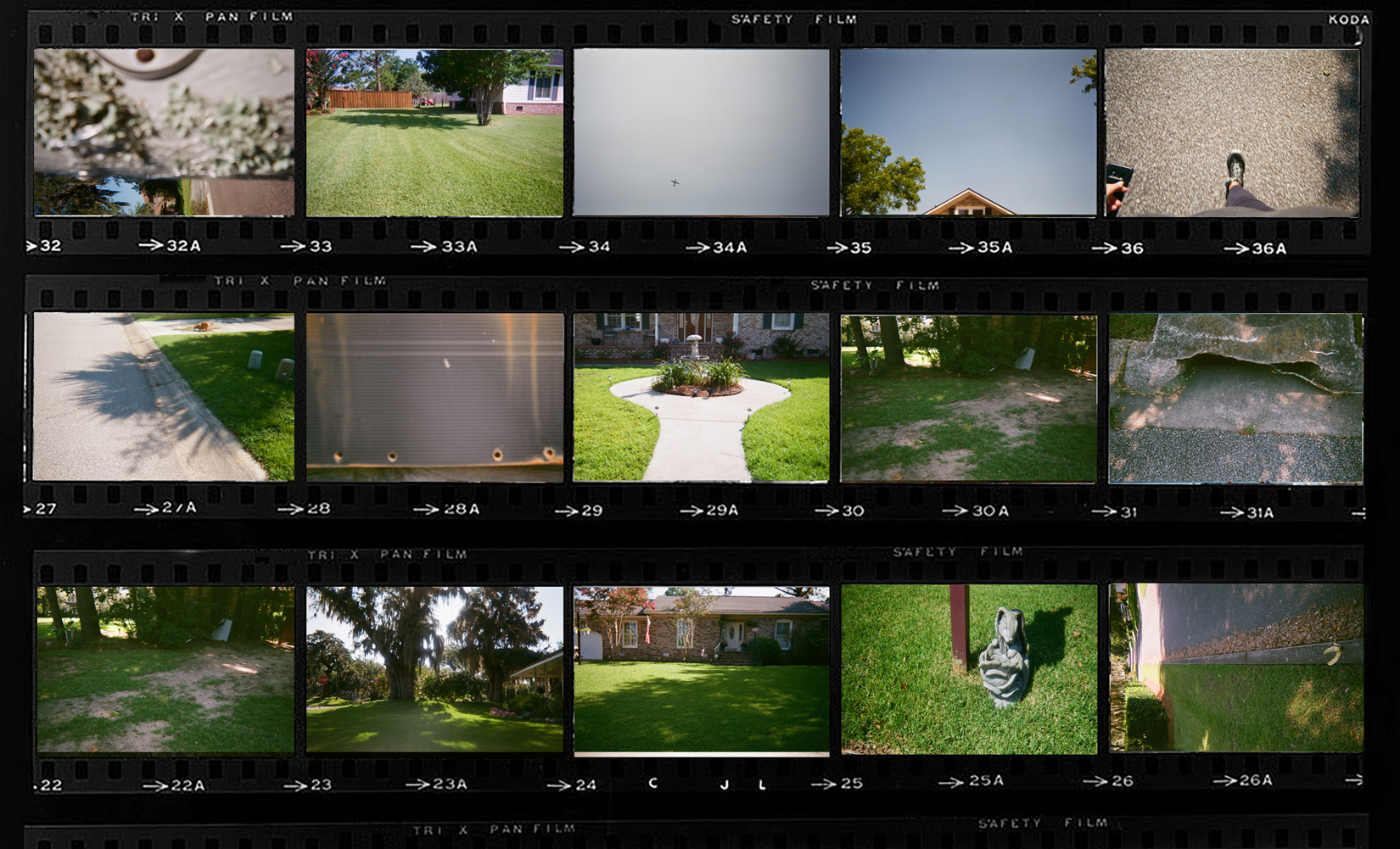“Developing Stories,” a series from Work in Progress, invites authors to carry a disposable camera and document whatever compels them—a reading, a walk in the woods, a tour of the writer’s hometown. This week we journey to suburbia with Tupelo Hassman, author of gods with a little g, and soak in its many absurdities and manicured lawns.

Cable’s Out Again
If I tried, purposefully, to take pictures that looked like Uncle Ned got drunk again and mistook the camera for the remote control, I probably couldn’t do it. Welcome to the end of my photography dreams.

Statuary
The first story I ever had published, “Elementary Photography,” is about what happens in between pictures, when nothing is still. It was published by the Portland Review Literary Journal when I was a senior in college, back when acceptance letters still came in the mail. I will never forget the forever it took to get the envelope open, how the sunlight fell on the floor of my studio apartment in Koreatown, Los Angeles. I’d rushed in with the mail, forgotten to close the door. The apartment had one of those heavy, metal security doors. I was meant to keep it locked because that was how it was there, busy, a place to keep the door locked. I’ve lived in many neighborhoods like that and felt right at home. This is my first time living in the suburbs and there is a different kind of heavy security here that is tricky to get used to. And here, everything is very still. This neighborhood is closed, there is only the single way in and out to discourage non-residents entering. The only ones who come in and out are us. The people who love statues.

Use a Coaster
The suburban lawn is like a formal living room, a room you mow. Its main functions are to be painstakingly tidied and not ever enjoyed, unless enjoyment comes in the painstaking tidying, and maybe it does. I call it the formal lawn. I can only imagine what names it has for me.

Me
I’m trying to be here for a long time, not necessarily a good time, so I go for a walk every day. I’m usually talking on the phone or listening to podcasts and audiobooks when I do. Because I have my head somewhere else on these walks—in another time zone with someone I love, in another place and time with writing I love—I’d never really noticed, until these pictures came back, how bleak it is here. Where is everyone? Am I okay? Why do my clothes match the pavement?
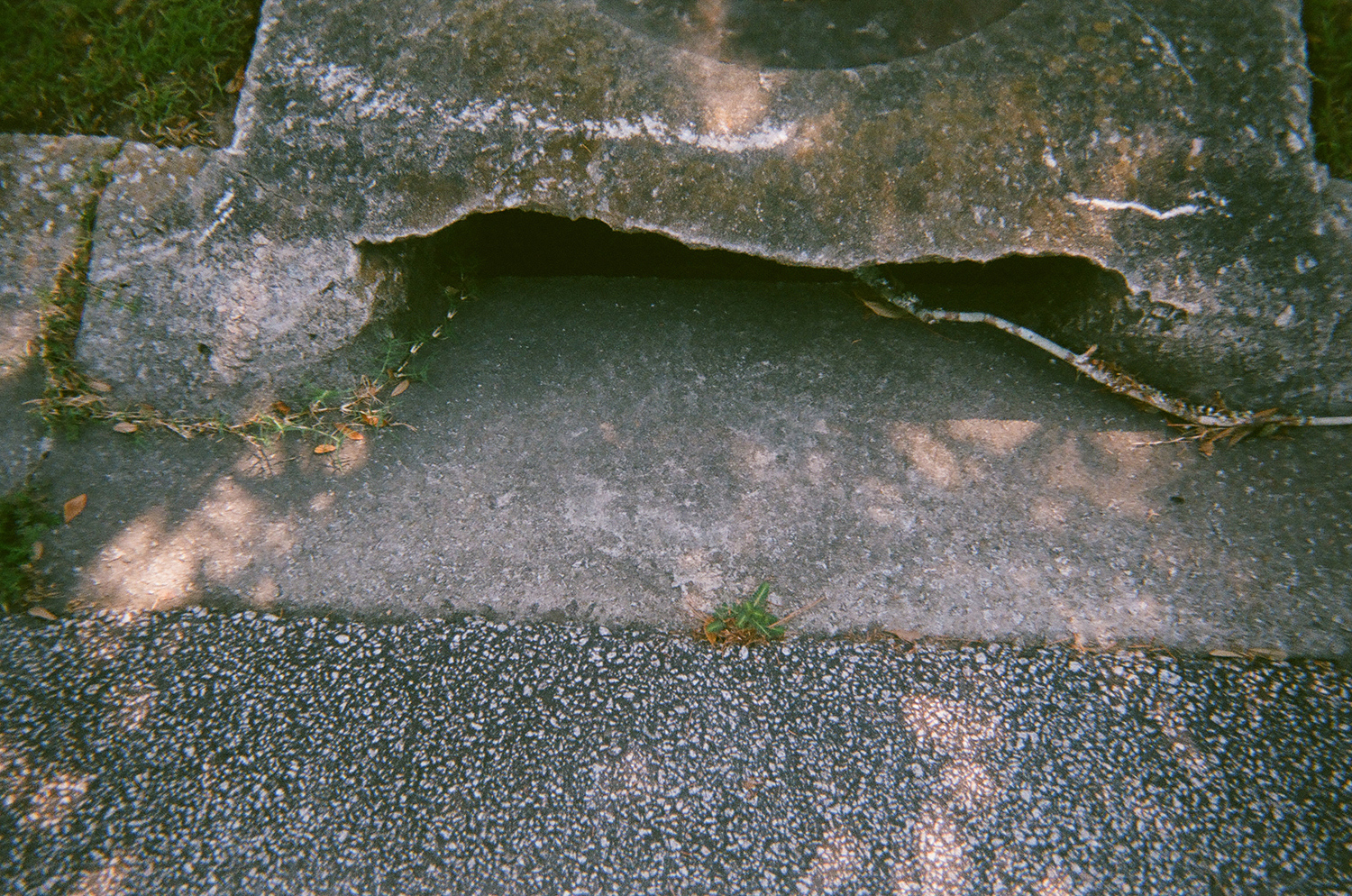
Whispers
This is how horror movies start.
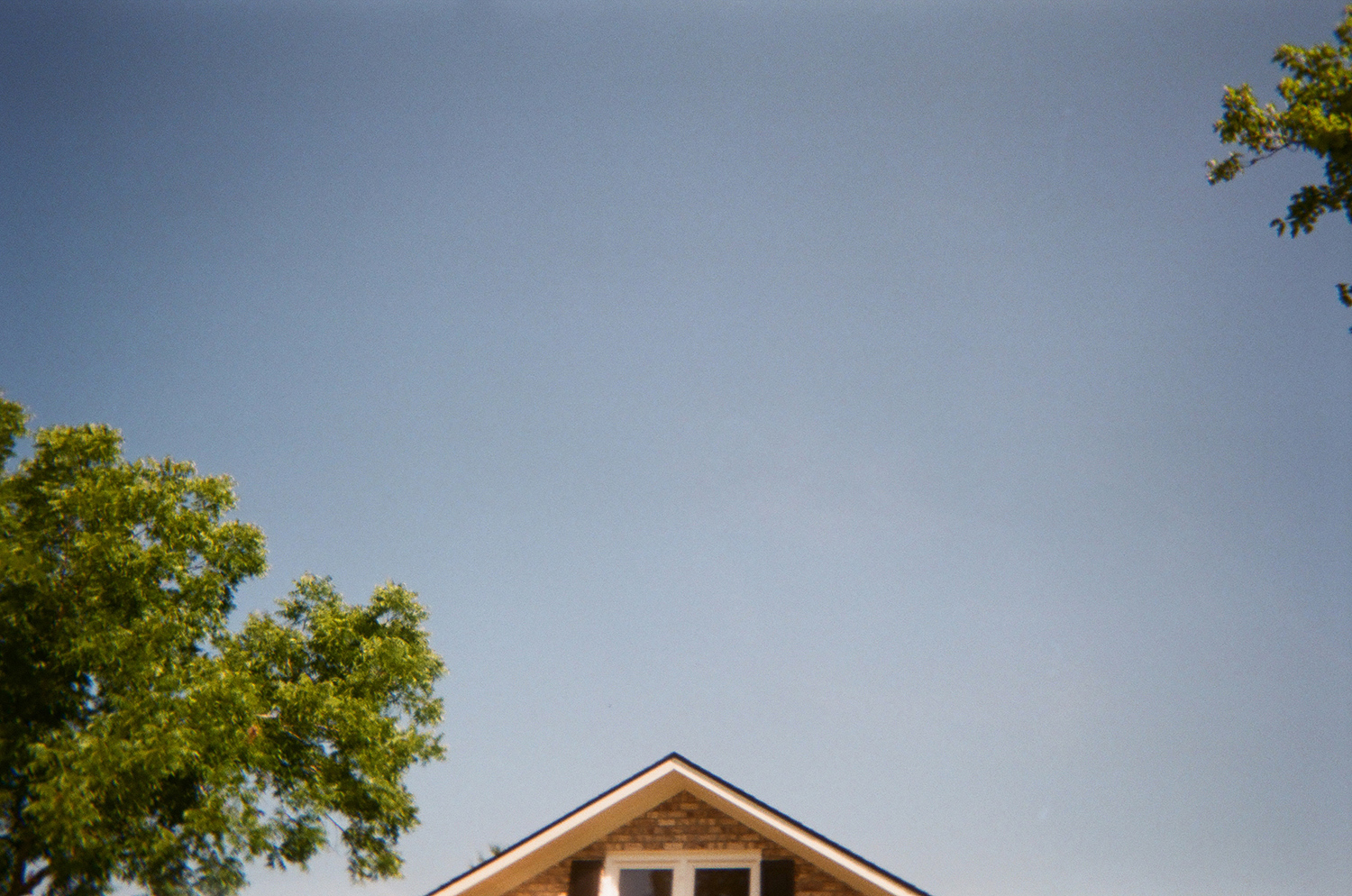
Amityville
A completely non-accidental shot of a bit of roof and mostly sky. This is the haunted house in my neighborhood. You’d feel it too if you were here and walking alone, your mind somewhere else until that shudder hit your spine and you crossed the street without needing to source exactly why. Life is great that way. Unlike a horror movie, where there is a house that gives us a terrible shiver and we go right inside like a pack of Hostess Ding Dongs, in real life, we are free to go away. I was hoping this old-school technology would capture the ghost holed up inside but I’m pretty sure it hangs out in the garage and I didn’t want to take a picture of the new owners just moving in (haunted houses always have new owners moving in, you knew that). I’m sure they’re nervous enough as it is, and it might look like I was casing the joint, eyeing their plastic bins of Christmas ornaments. So, I hoped the ghost was outside today, like me, and I pretended to be taking a picture of a plane.

Flight
I felt bad for lying about the plane, even though I lied to no one. So I took a picture of a plane. I live on a flight path and see many military cargo planes. The military planes fly lower, so low you can see parts, compartments, things to think about. I live on an anxiety path and every day, with every plane, I am terrified until it passes. I think about those living moment-to-moment in reasoned fear of the sound of planes and the devastation they can bring, and how, even in that reality, there is still the getting up, the making beds; there is still seeing people off to the places from which they might not return. Every day, everywhere, we do these things. A part of us standing still like statues, waiting for everyone to come safely home.
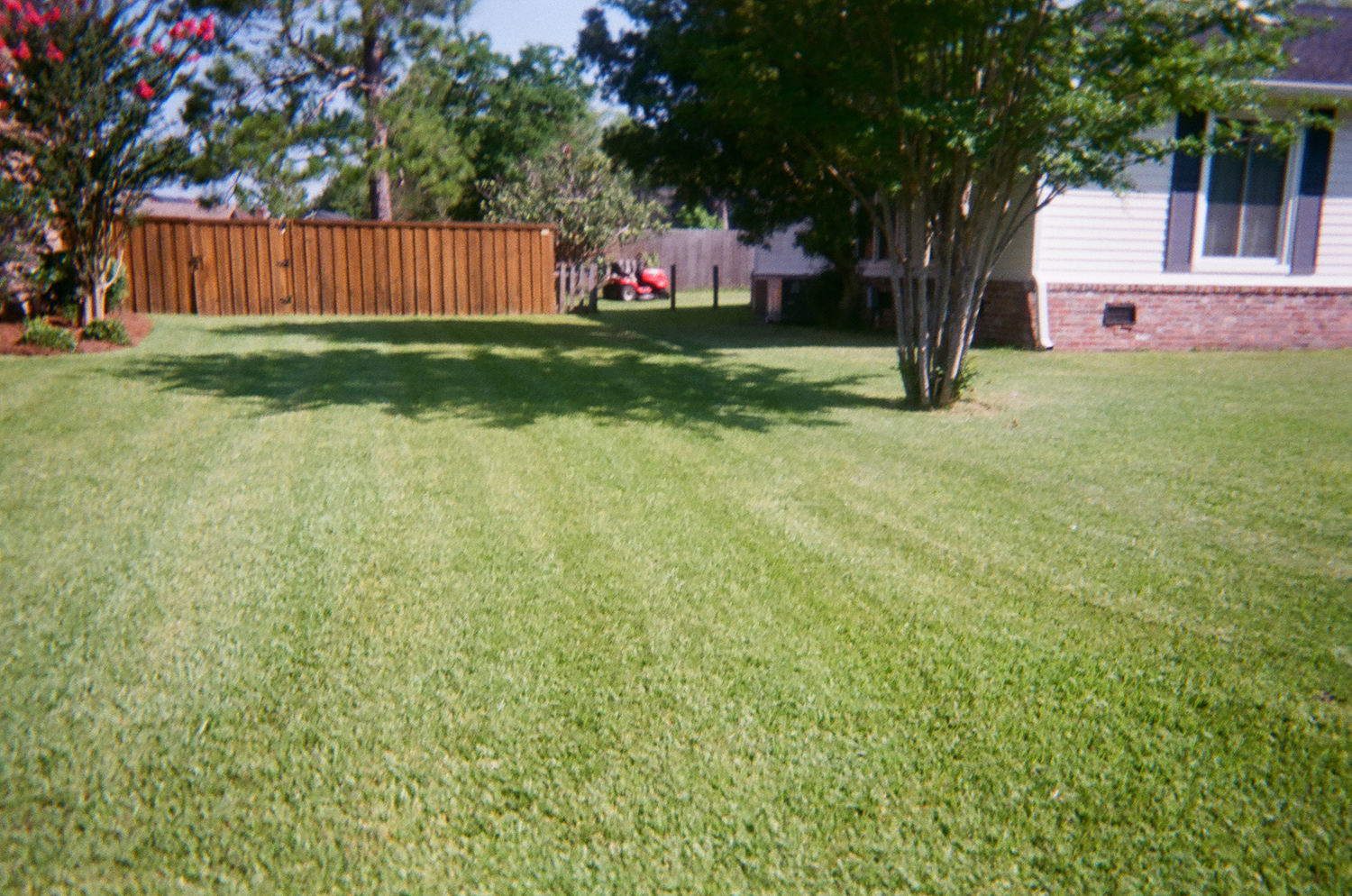
The Devil You Mow
Nature is always on the hustle and especially here in the humidity and heat. That look of having a tamed space, a re-tamed space, this week just like last week, achieving that look is some version of the American Dream. Many loud machines are involved in the winning of this endless war. Tank tops fashioned from old T-shirts are worn until they disintegrate with sweat and grease stains and curses muttered underneath the breath. The smell of cut grass is the organism communicating danger to its fellows. We remember the smell of its fear as childhood.
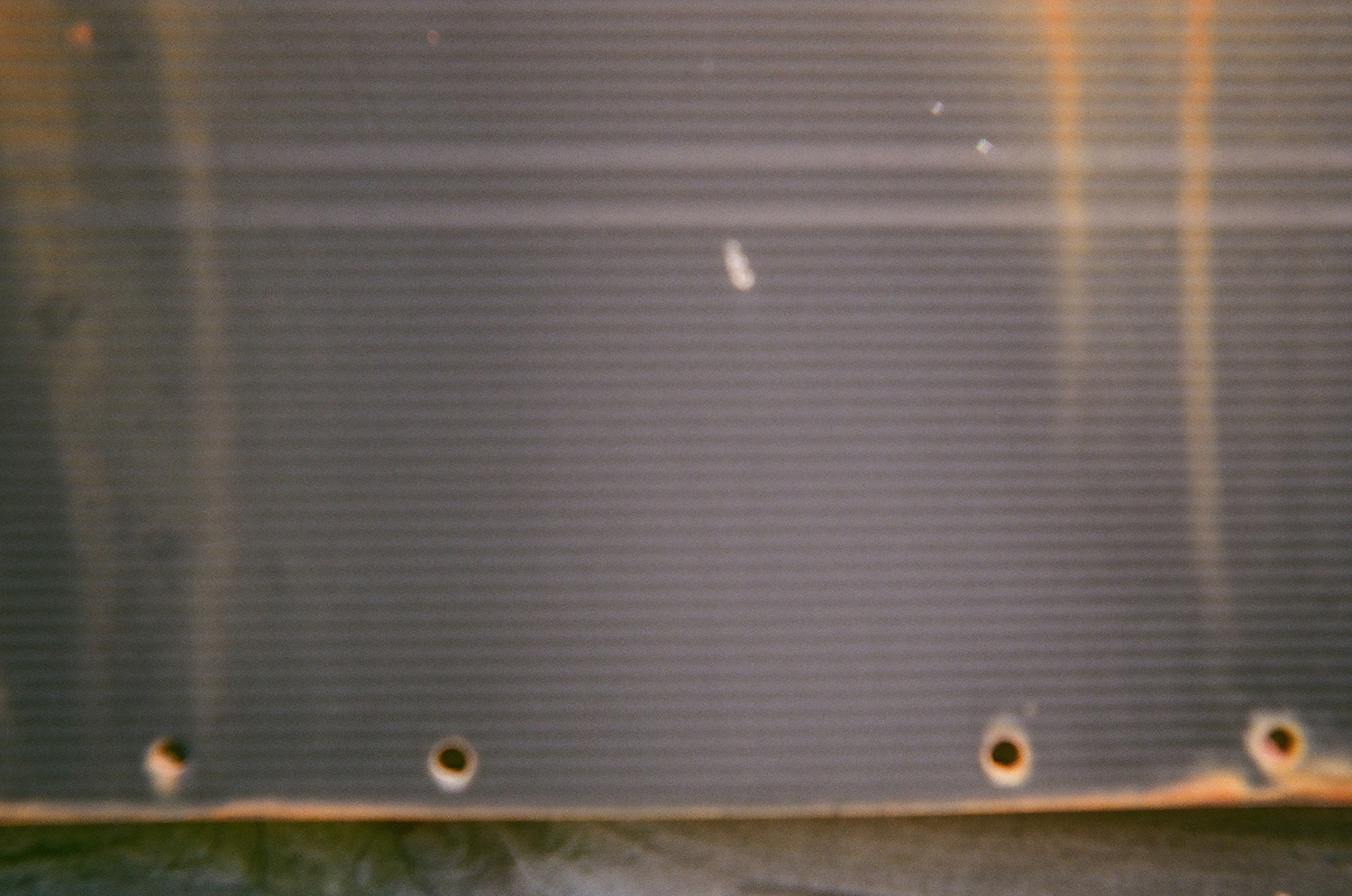
Woof
It’s a gift, really, to use an entire roll of film and have nearly all the pictures look like the dog ran off with the camera.
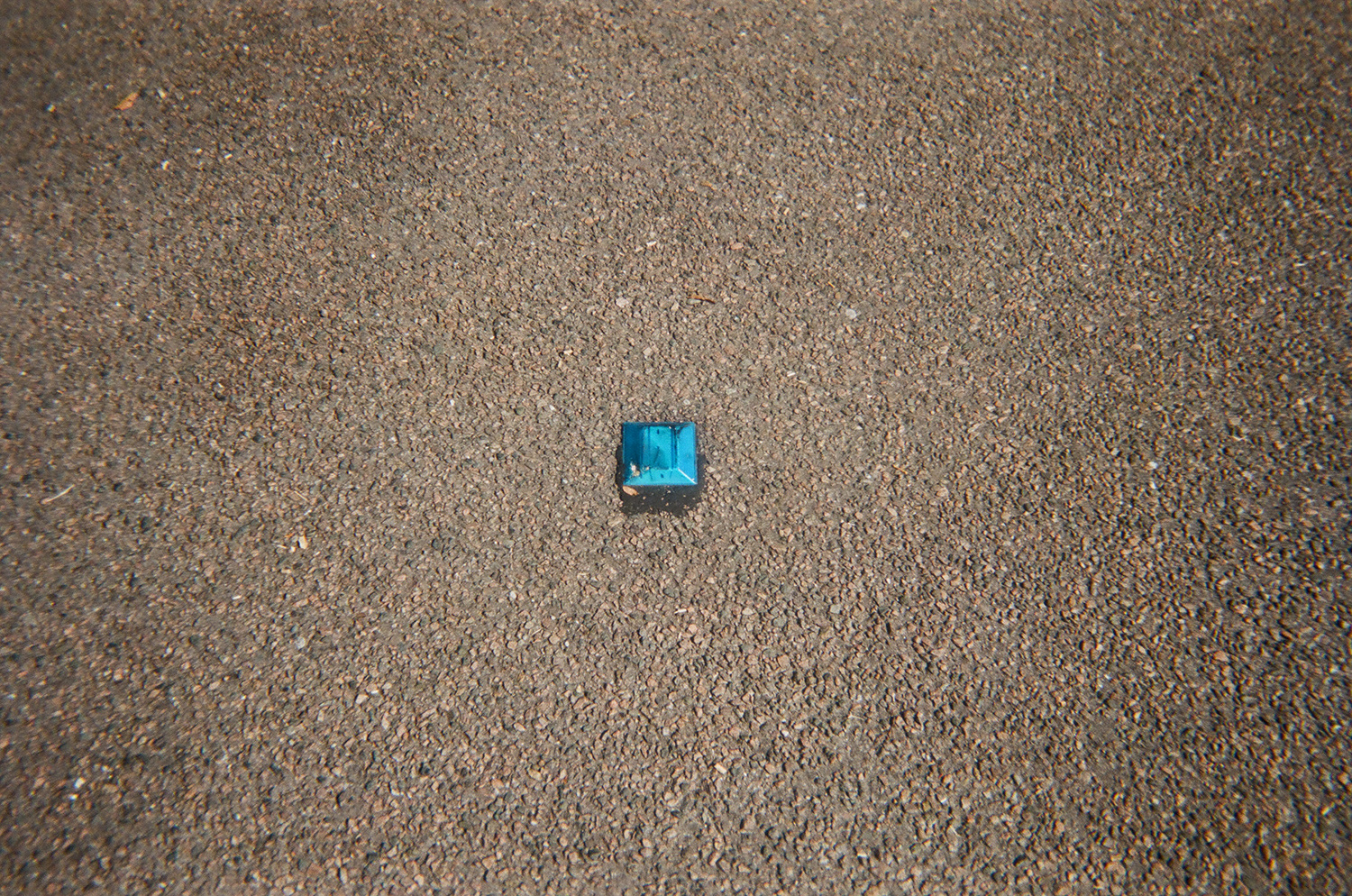
That Blue Thing
This is how a They Might Be Giants song starts. And ends. This is an entire They Might Be Giants song.
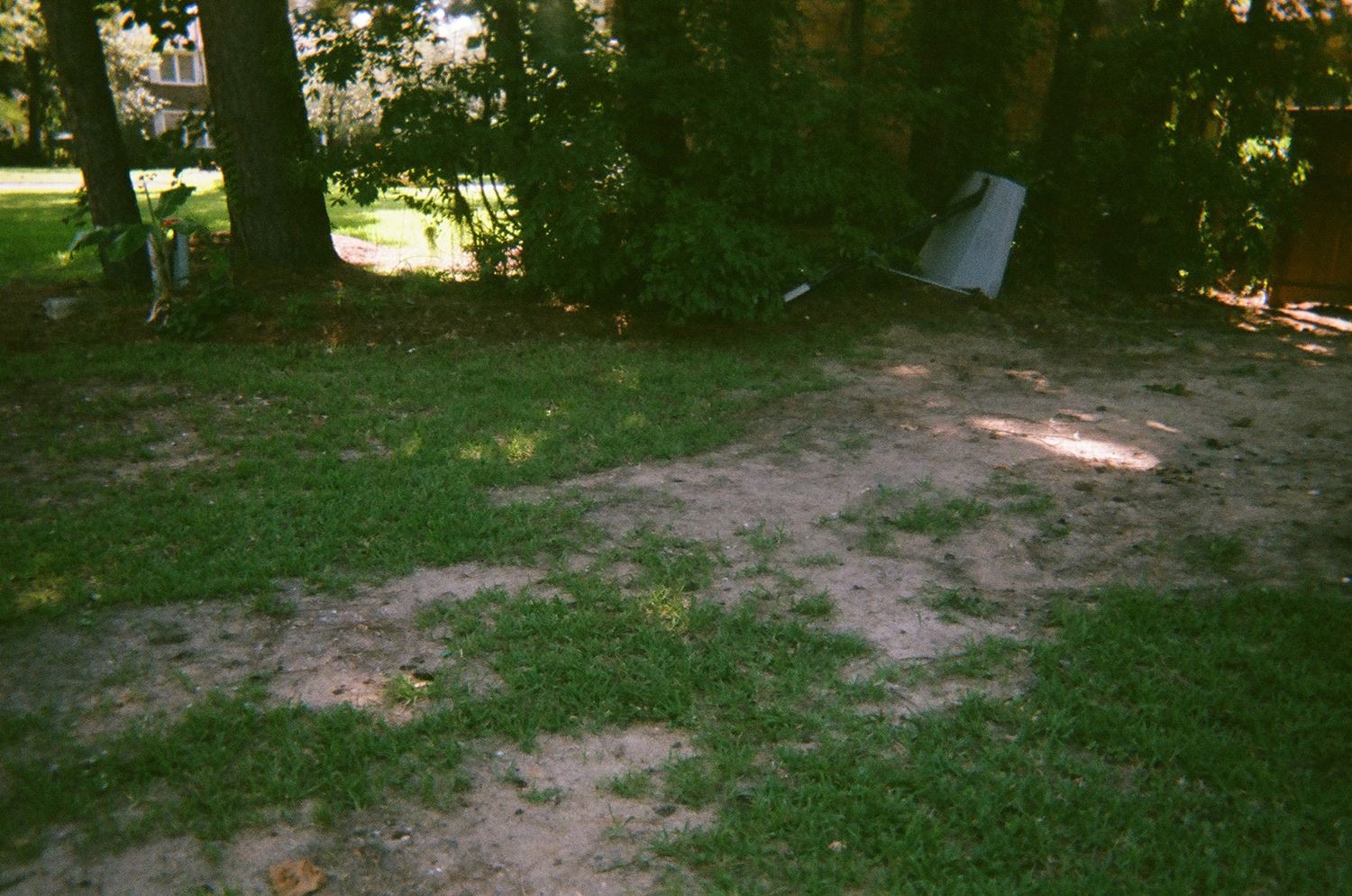
Horse
There’s a basketball hoop there in the brambles. Basketball hoops, like trampolines and treadmills, always seem like a good idea at the time. Then they turn into statues.
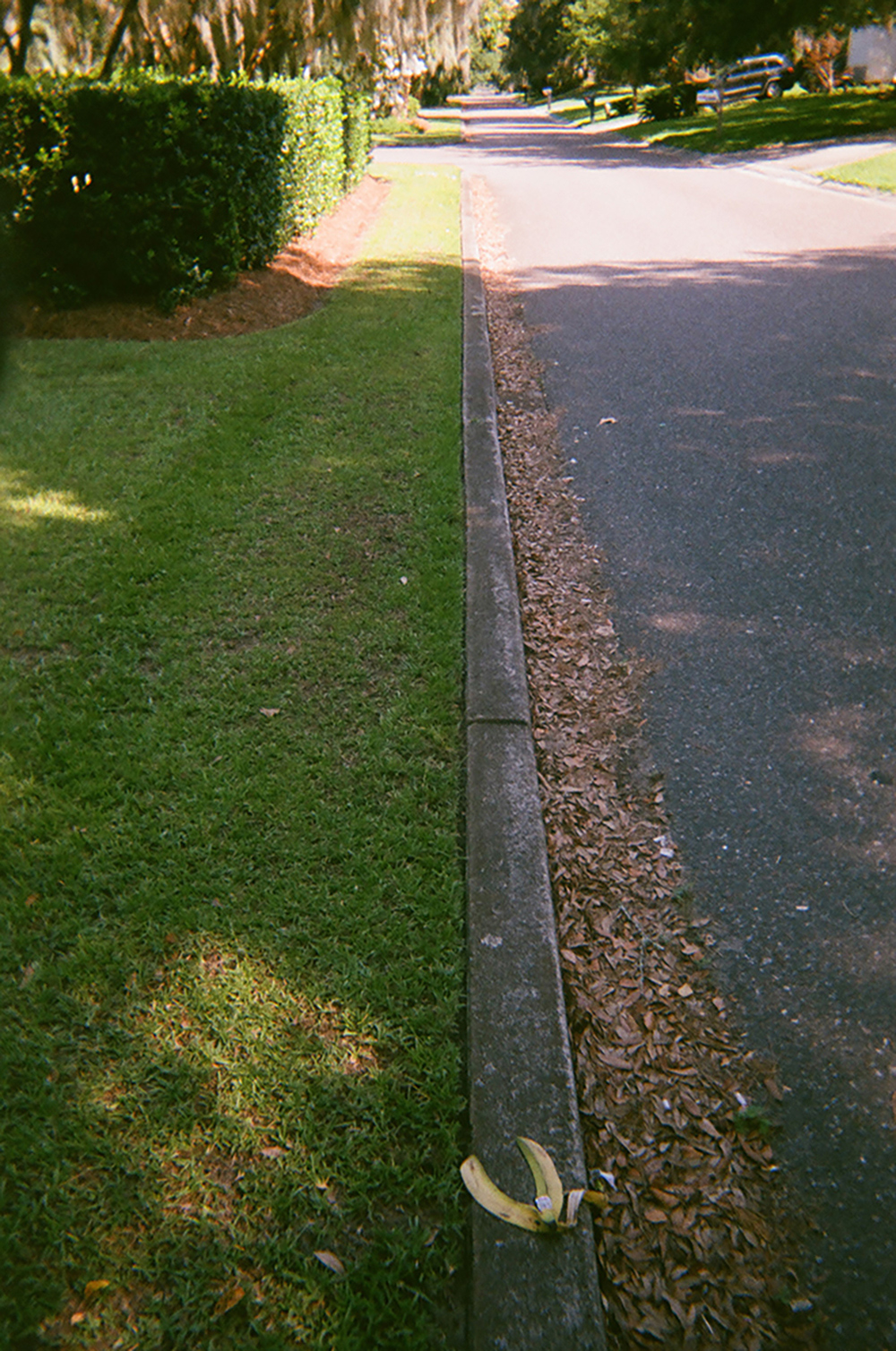
Pratfall
Evidence of tiny crimes can be collected from the central medians, proof of mundane vice, cigarette packs and tiny liquor bottles tossed out the car window before pulling into home. Is anyone fooled? Or is the only person fooled the one briefly drunk on a thimbleful of vodka and the flood of power at having a secret? I don’t know. I will say that this banana peel appearing on the median can only mean one thing: some clown is having an affair.
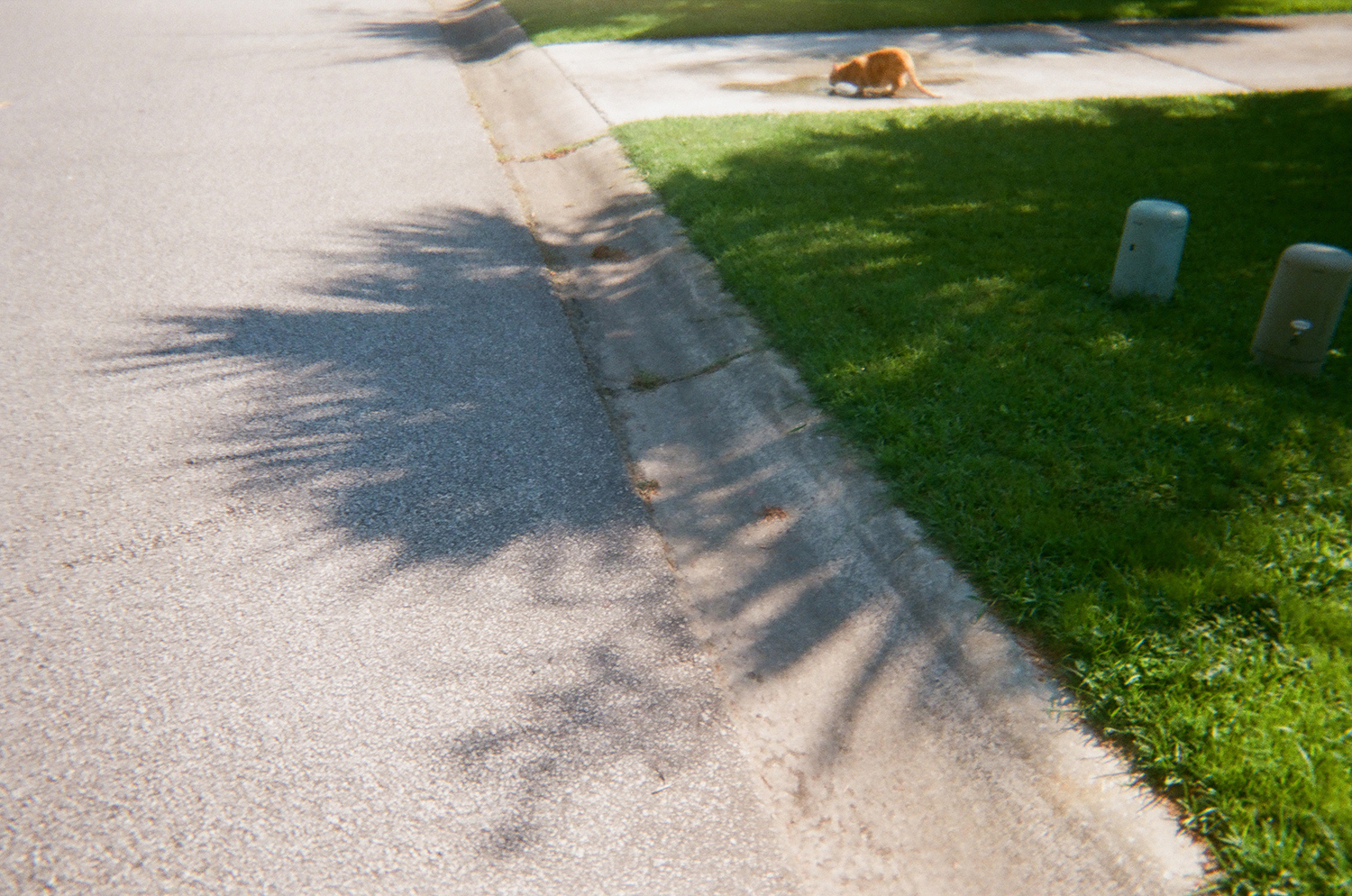
Whiskers
This photo was meant to capture the cat without scaring it away and now it seems like it isn’t about the cat at all. The cat is the blurry orange blob there. Can you see what a fluffernutter it is? This was meant to be about my concern for the cat, potentially drinking coolant from a puddle in the driveway, but that concern is out of frame. It rains so much here, poisons must be diluted, right? This is what we will tell ourselves.
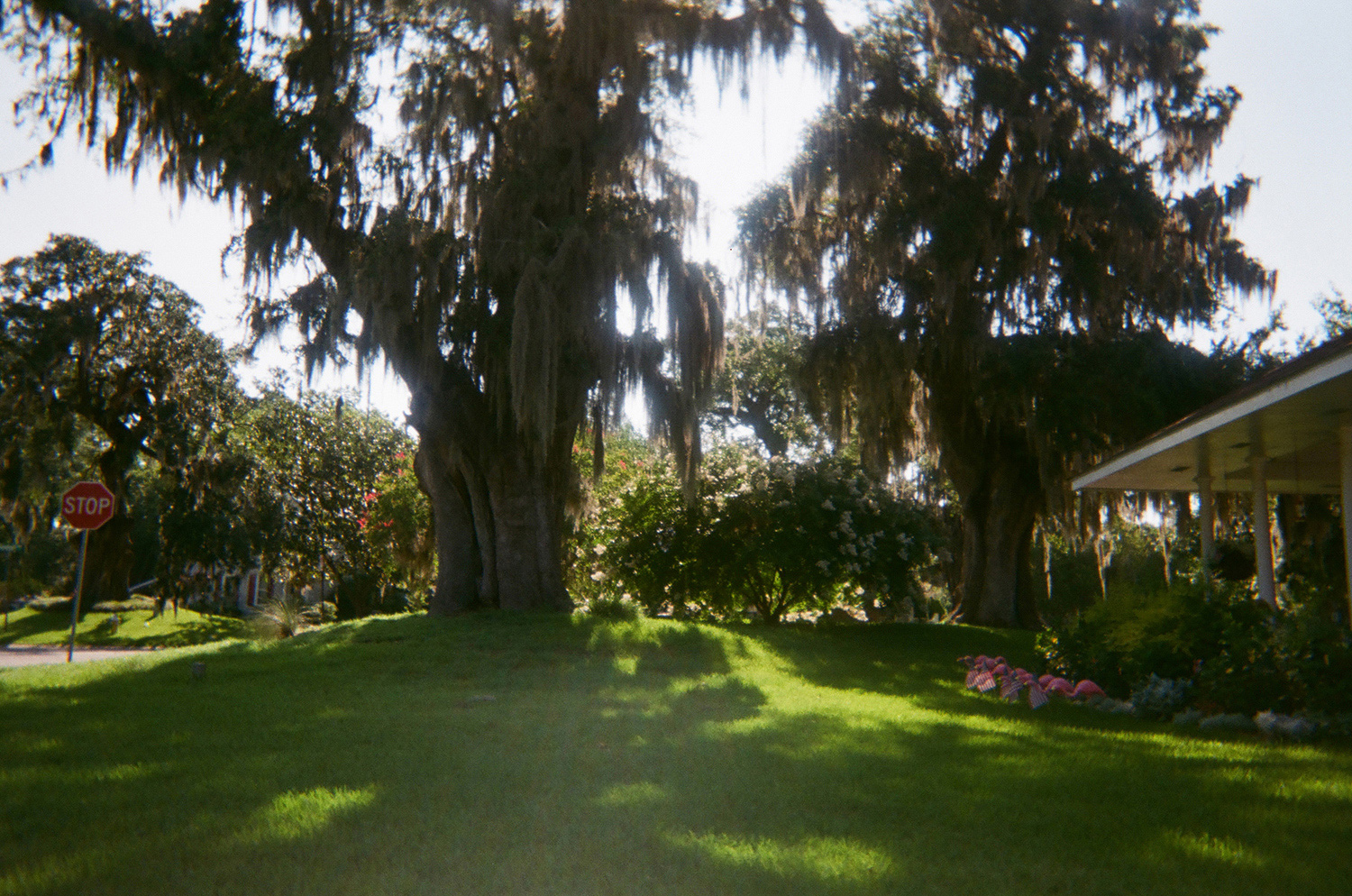
Flamboyance
This tree! The Spanish moss! And beneath it, it’s really worth looking closely at the row of flamingos to the right there. They are flanked by American flags for the Fourth of July. The flamingos are always up to something. In April, nests appeared beneath them and baby flamingos popped out on Easter morning. For Pride, they were festooned with garlands and partied all the way to the median and back. These flamingos, who use their formal lawn because they know that life is too short, have brought me great joy. A cool thing to take a picture of would have been Theo, a 6’+ tall dancing, wooden pig that I inherited from my pop. Theo is a statue we keep indoors. Theo once wrote a note to the flamingos thanking them for helping me feel less alone here. The flamingos’ carer read them the note and then came over to say hello. I was wearing, shall we say, loungewear, in the afternoon, deep in the final edits of gods with a little g, and behaving even more awkwardly than usual because I was worried I smelled like an entire coffee pot. Plus, Theo didn’t even tell me he’d written to anyone and here was a living human on my porch. I don’t always know I’m not the ghost hanging about in our garage. Neighbors help.
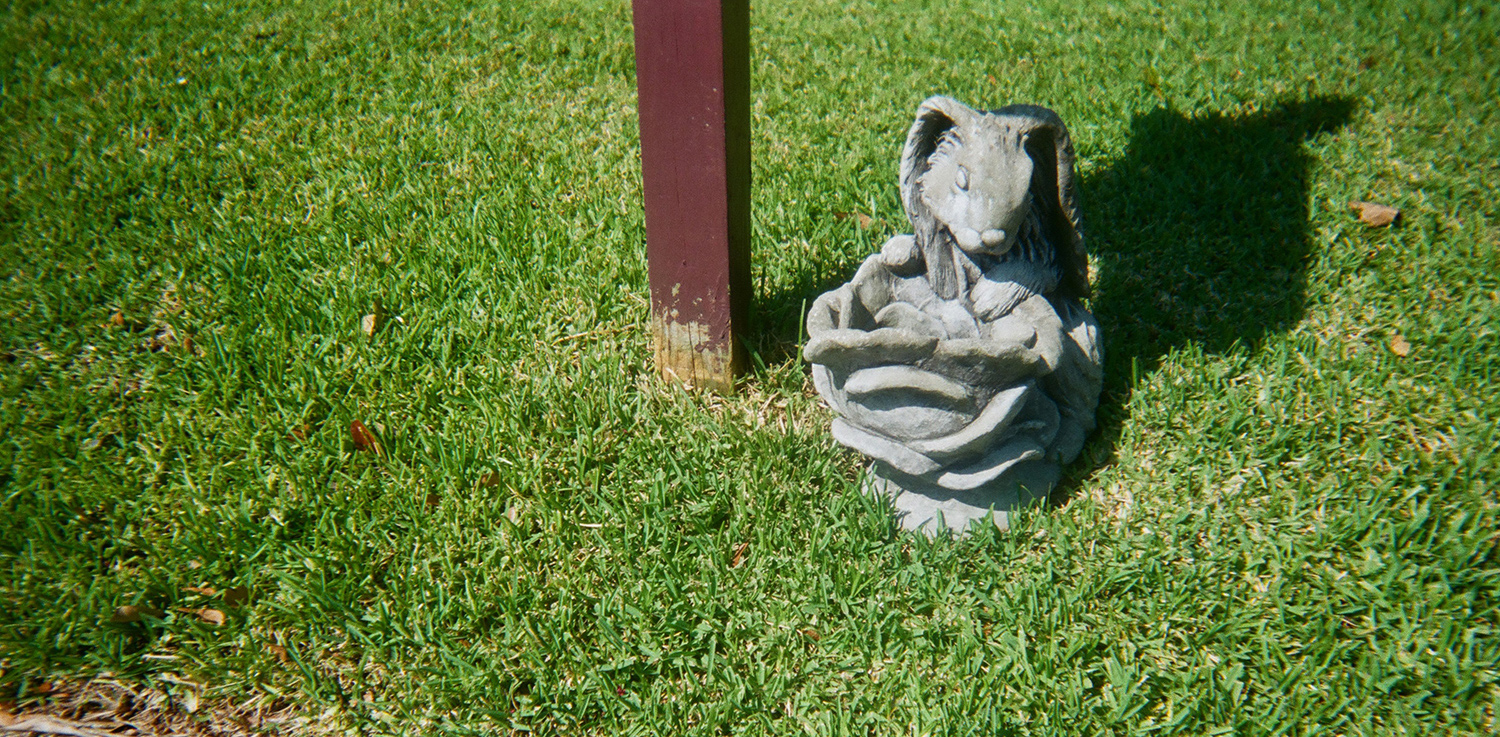
The Venus of Willendorf
After my kids are asleep for the night, I might go for the very fast walking I have the temerity to call “a run.” I use the Zombies Run! app and in the twilight, when the dogs are out for their last trips to the medians to pee (because the dogs aren’t allowed to pee on the formal lawns, that’s right), the humans shuffle along in slippers trailing their dogs as they stop and start and this has the effect of making Zombies Run! come to life in exquisitely terrifying fashion. Also, at night, this bunny’s shadows coalesce into the shape of a fertility goddess and the frogs and insects go bonkers and between the zombies and the shadowed goddess and the chirring, the streets are a gorgeous thrill and I run for my life, for everyone’s life, for how life insists on itself wherever we are.
Tupelo Hassman’s debut novel, Girlchild, was the recipient of the American Library Association’s Alex Award. Her work has appeared in The Boston Globe, Harper’s Bazaar, Imaginary Oklahoma, The Independent, Portland Review, and ZYZZYVA, among other publications. She is the recipient of the Nevada Writers Hall of Fame Silver Pen Award and the Sherwood Anderson Foundation Fiction Award, and is the first American to have won London’s Literary Death Match. She earned her MFA at Columbia University.
